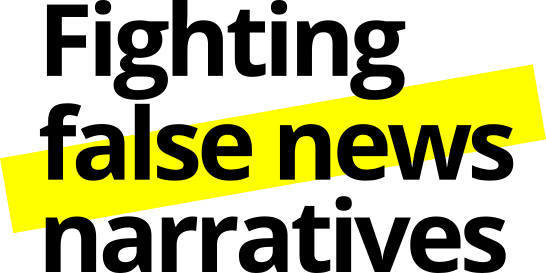
The Disinformation
*The texts will be categorized based on the above definitions.
Selection of the media outlets for monitoring
The monitoring encompasses the following types of media:
Online – web-portals
TV channels
Social media
The process of selection of the media outlets was performed on the basis of the frequency of publishing disinformation using the “snow ball” method (for the Internet portals) and the periodical reports of the Agency for Audio and Audio-visual Services in North Macedonia (for the TV stations) on the ratings and frequencies of the media products. The process organized through several levels of supervision and control, filters the articles by the monitors reaching the stage for debunking / research and publishing. Each article is prepared in three languages Macedonian, Albanian and English.
F2N2 sections
The products developed by F2N2 come in four different packages: Disinformation, D-Narrative, Analyses and Videos.
The Disinformation section contains short articles primary targeting a disinformation which is published by some media outlets/social media pages and public profiles. This section offers the readers with a short easy-to-read story, which offers facts and evidences that prove the assessment of the analyzed disinformation. The nature of this section is to offer a prompt reaction to a disinformation noted through the monitoring, thus enabling the public to receive a timely and credible information prior to the development of a larger narrative and its dissemination on the social media. The database of all the cases is searchable by two parameters: assessment of the text and topic, thus offering a historical overview of the disinformation narratives.
The articles in the section are drafted following the steps below:
- F2N2 title of article;
- Assessment;
- Providing the original title of the text,
- Description of the disinformation;
- Link to the original article\s;
- Links to the archived original article;
- Fact-checking, research and consultations;
- Debunking of disinformation: clearly explained evaluation which is based on the determined facts and the methodology of evaluation.
This section offers the readers not so long analysis of the Disinformation narrative formed around one issue based on several Disinformation articles / stories published and shared. Being longer than the Disinformation product, this narrative offers the readers an overview of the facts, trends, evolvement of the disinformation narrative on the internet and social media via certain periodical and geographical parameters i.e. who published the news first and when, who changed the context, when did the disinformation narrative appear and around which important event, and / or how the news evolved to disinformation.
The Analyses segment provides the public with more academic and scientific read on the issues that are subject of disinformation. This section will use the services of various academic and practitioner experts, thus providing specific information, clarifications and practical blueprints on the issue.
The Video section will produce content in a form of short videos with easy to understand explanations on disinformation and its causes, as well as presentation of F2N2 stories.





